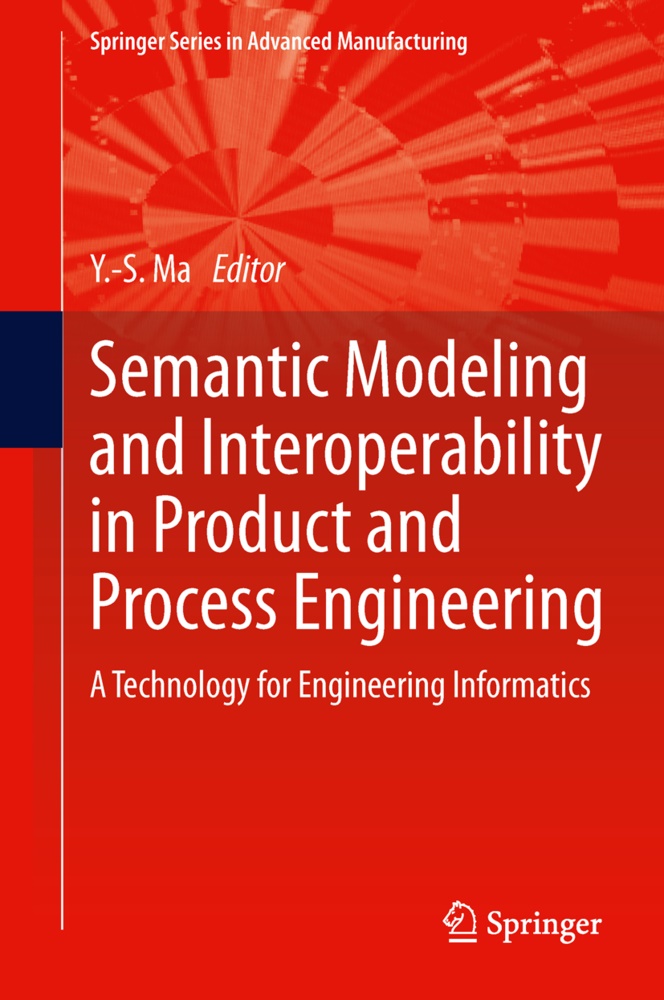Share
Fr. 198.00
Yongsheng Ma, Yongshen Ma, Yongsheng Ma
Semantic Modeling and Interoperability in Product and Process Engineering - A Technology for Engineering Informatics
English · Hardback
Shipping usually within 2 to 3 weeks (title will be printed to order)
Description
In the past decade, feature-based design and manufacturing has gained some momentum in various engineering domains to represent and reuse semantic patterns with effective applicability. However, the actual scope of feature application is still very limited. Semantic Modeling and Interoperability in Product and Process Engineering provides a systematic solution for the challenging engineering informatics field aiming at the enhancement of sustainable knowledge representation, implementation and reuse in an open and yet practically manageable scale.
This semantic modeling technology supports uniform, multi-facet and multi-level collaborative system engineering with heterogeneous computer-aided tools, such as CADCAM, CAE, and ERP. This presented unified feature model can be applied to product and process representation, development, implementation and management. Practical case studies and test samples are provided to illustrate applications which can be implemented by the readers in real-world scenarios.
By expanding on well-known feature-based design and manufacturing approach, Semantic Modeling and Interoperability in Product and Process Engineering provides a valuable reference for researchers, practitioners and students from both academia and engineering field.
List of contents
1.Introduction to Engineering Informatics.- 2.A Review of Data Representation of Product and Process Models.- 3.An Example of Feature Modeling Application: Smart Design for Well-Drilling Systems.- 4.Fundamental Concepts of Generic Features.- 5.United Feature Paradigm.- 6.Features and Interoperability of Computer Aided Engineering Systems.- 7.Data Representation and Modeling for Process Planning.- 8.Computation of Offset Curves Using a Distance Function: Addressing a Key Challenge in Cutting Tool Path Generation.- 9.Feature Transformation from Configuration of Open-Loop Mechanisms into Linkages with a Case Study.- 10.Feature-Based Mechanism Design.- 11.A Smart Knowledge Capturing Method in Enhanced Generative Design Cycles.
About the author
Dr. Yongsheng Ma is a professor in the Department of Mechanical Engineering, University of Alberta (U of A), Canada. He joined U of A in 2007. Before that, Dr. Ma had been with Nanyang Technological University, Singapore, since 2000. From 1996 to 2000, Dr. Ma was with the Singapore Institute of Manufacturing Technology (SIMTech) starting as a senior research fellow and group manager. He was a lecturer at Ngee Ann Polytechnic from 1993 to 1996.
Dr. Ma received his B. Eng. from TsingHua University, China (1986), and both MSc and PhD degrees from Manchester University, UK (1990 and 1994).
Dr. Ma’s main research areas include CADCAM, engineering informatics, feature-based product and process modelling, and product lifecycle management (PLM). Dr. Ma’s expertise is in feature-based intelligent product and engineering process informatics. Dr. Ma had led a team of researchers at SIMTech (1996-2000), and developed a plastic mould design software tool named QuickMouldTM, which had been commercialized and known as MoldwizardTM under Siemens NX product series.
Dr. Ma proposed a fundamental framework of associative feature theory in 2003. This pioneering work suggests an advanced feature modeling method that supports engineering feature objects consistently across the iterative engineering phases of a product and process system from cradle to grave. It was commented by a recent paper in the Journal of CAD that the associative feature concept “bridges the gap between the interfacing of knowledge-oriented tools and CAD applications”. Further, together with his students, Dr. Ma proposed unified feature scheme which was intended to enable computer systems to support geometrical and non-geometrical feature associations, which represents facts in the higher level knowledge model.
Dr. Ma was awarded SBFSS scholarship from China government in 1987. In 2012, he won Alberta Science and TechnologyLeadership award for outstanding achievement in applied technology and innovation.
Summary
In the past decade, feature-based design and manufacturing has gained some momentum in various engineering domains to represent and reuse semantic patterns with effective applicability. However, the actual scope of feature application is still very limited. Semantic Modeling and Interoperability in Product and Process Engineering provides a systematic solution for the challenging engineering informatics field aiming at the enhancement of sustainable knowledge representation, implementation and reuse in an open and yet practically manageable scale. This semantic modeling technology supports uniform, multi-facet and multi-level collaborative system engineering with heterogeneous computer-aided tools, such as CADCAM, CAE, and ERP. This presented unified feature model can be applied to product and process representation, development, implementation and management. Practical case studies and test samples are provided to illustrate applications which can be implemented by the readers in real-world scenarios. By expanding on well-known feature-based design and manufacturing approach, Semantic Modeling and Interoperability in Product and Process Engineering provides a valuable reference for researchers, practitioners and students from both academia and engineering field.
Product details
| Authors | Yongsheng Ma |
| Assisted by | Yongshen Ma (Editor), Yongsheng Ma (Editor) |
| Publisher | Springer, Berlin |
| Languages | English |
| Product format | Hardback |
| Released | 11.02.2013 |
| EAN | 9781447150725 |
| ISBN | 978-1-4471-5072-5 |
| No. of pages | 389 |
| Dimensions | 164 mm x 244 mm x 28 mm |
| Weight | 719 g |
| Illustrations | XVIII, 389 p. |
| Series |
Springer Series in Advanced Manufacturing Springer Series in Advanced Manufacturing |
| Subject |
Natural sciences, medicine, IT, technology
> Technology
> Miscellaneous
|
Customer reviews
No reviews have been written for this item yet. Write the first review and be helpful to other users when they decide on a purchase.
Write a review
Thumbs up or thumbs down? Write your own review.

